Are you looking for a specific topic? Use the search function at the top right.
Sind Sie auf der Suche nach einem bestimmten Thema? Nutzen Sie die Suchfunktion oben rechts.
Wenn Sie unser Magazin kostenfrei abonnieren möchten, schicken Sie eine Mail mit dem Betreff FELD und Ihren Kontaktdaten an: feld@zalf.de.
Sie möchten die neuen FELD-Ausgaben lieber online nachlesen?
Dann registrieren Sie sich für den Newsletter auf unserem Online-Blog zum Magazin: www.quer-feld-ein.blog
FELD 03/2017
- Text
- Water
- Waste water
- Food
- Food supply
- Science
- Women
- Consumers
- Diversity
- Invasive
- Brandenburg
- Urban
- Regional
- Zalf
- Leibniz
- Species
- Pollinators
- Mosquito
- Bees
- Landscape
- Agricultural
Mückenmodell
Mückenmodell Mückenmodell UNTIL 2020 UNTIL 2080 for example, the model calculated that the Asian bush mosquito would settle in the vicinity of Jena in Thuringia in 2016: a forecast that was accurately confirmed. With each new mosquito finding, the computer model becomes more reliable and provides the mosquito atlas team with increasingly accurate information about potential distribution areas. "We send tens of thousands of virtual mosquitoes on their travels and track each and every path", Dr. Wieland explains. He and his team continue to work on refinements to the model. Climate change will be taken into account in the future, as will characteristic landscape features or human intervention. What obstacles do the mosquitoes have to overcome? Which routes encourage their distribution? For example, the mosquito atlas team discovered that the new habitats of the Asian tiger mosquito are almost always found along motorways – yet another variable to be added to the model. The results can ultimately be used to create distribution maps for the future. The model is already simulating the conditions under which the Asian bush mosquito could settle in Germany: "It will establish itself throughout West Germany, including Thuringia, parts of Mecklenburg-Western Pomerania and Lower Saxony. In principle throughout the whole of Germany by 2060." Thus, the future path of the mosquitoes has already been virtually mapped out, thereby providing mosquito researchers with important clues and ideas for their search in the real world. Dr. Wieland is not only able to use his model for mosquitoes, it would work just as well for other animals. "We are in the middle of a great revolution in science", he stresses. Of course, individual researchers are not about to be replaced by machines. "But computers today allows us data-supported insights into interrelationship that were simply not possible just a few years ago due to the lack of computing power." Areas in which the Asian bush mosquito has at least a 50% chance of occuring. www.zalf.de/feld/en 32 33
- Seite 1 und 2: 03 · 2017 MAGAZINE OF THE LEIBNIZ
- Seite 4: COVER STORY WHERE HAVE ALL THE BEES
- Seite 8: Pollinators Pollinators The challen
- Seite 12: HUNGER IN THE CITY Life is booming
- Seite 16: Regional food supply Regional food
- Seite 20: Regional food supply Regional food
- Seite 24: Rewetting of fens Rewetting of fens
- Seite 28: Rewetting of fens Rewetting of fens
- Seite 32: Mückenmodell THE VIRTUAL PATH OF T
- Seite 38: The mission of the Leibniz Centre f
Unangemessen
Laden...
Magazin per E-Mail verschicken
Laden...
Einbetten
Laden...
FELD (dt.)
Neu im querFELDein-Podcast
Would you prefer to read the new FELD issues online?
Then register for the newsletter on our online blog: www.quer-feld-ein.blog

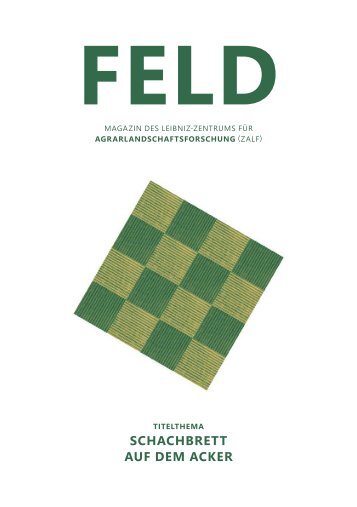
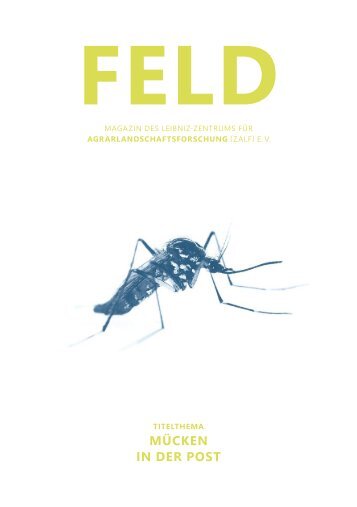

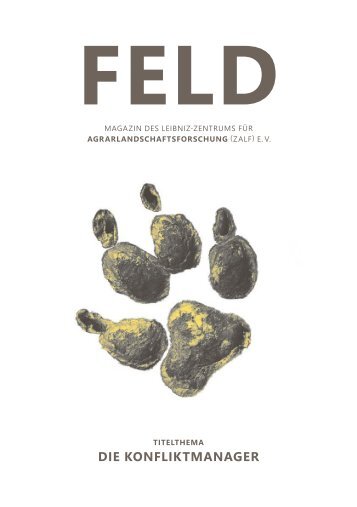
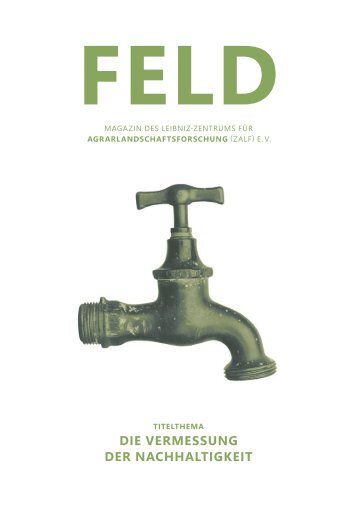
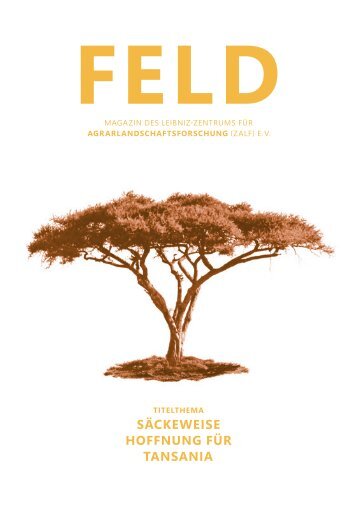
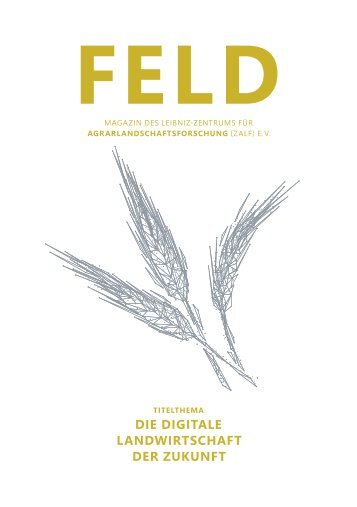
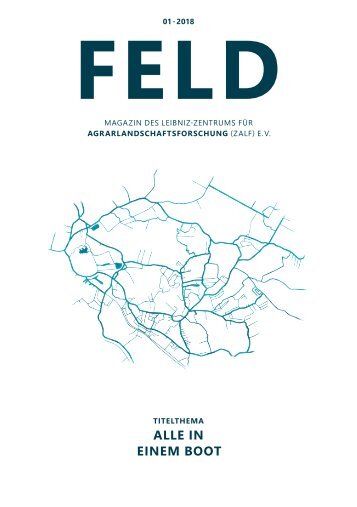
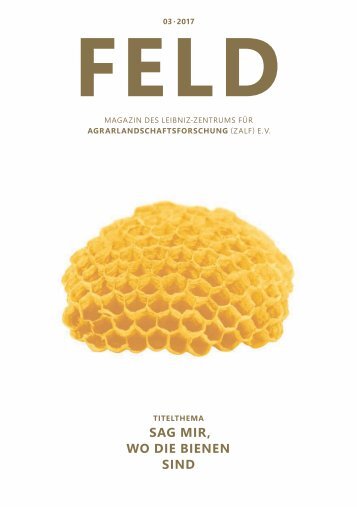
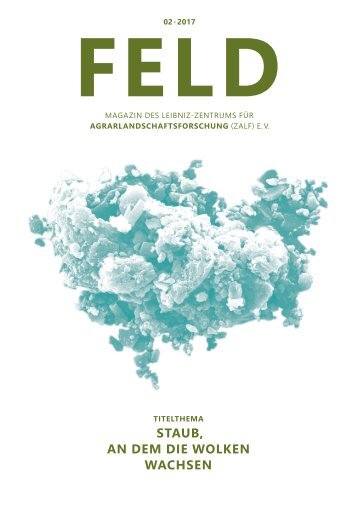

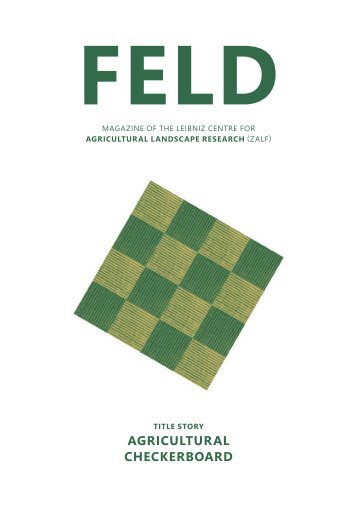

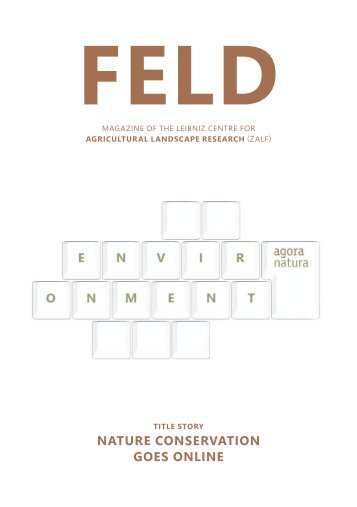








FOLLOW US
Twitter
Youtube
Instagram
LinkedIn